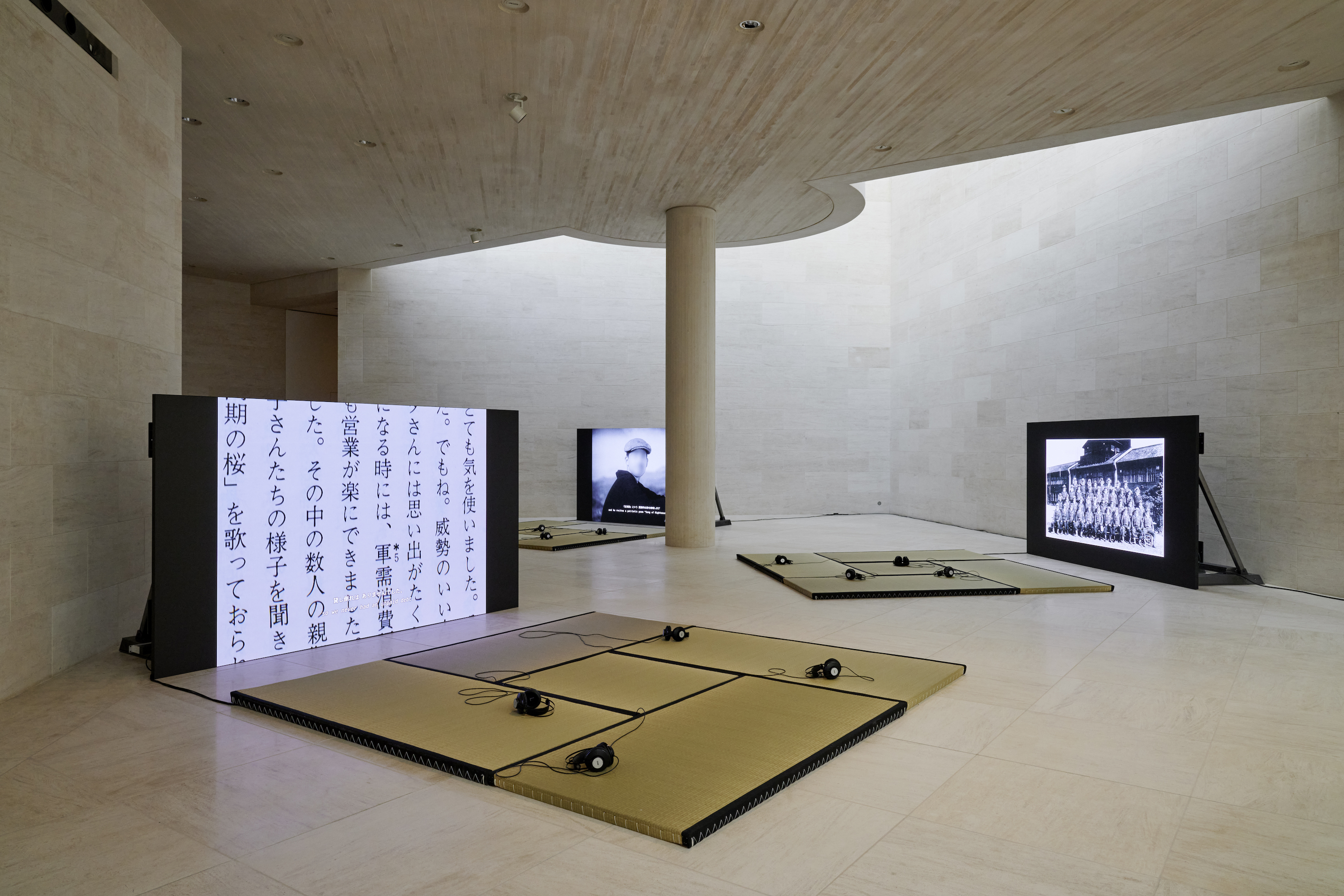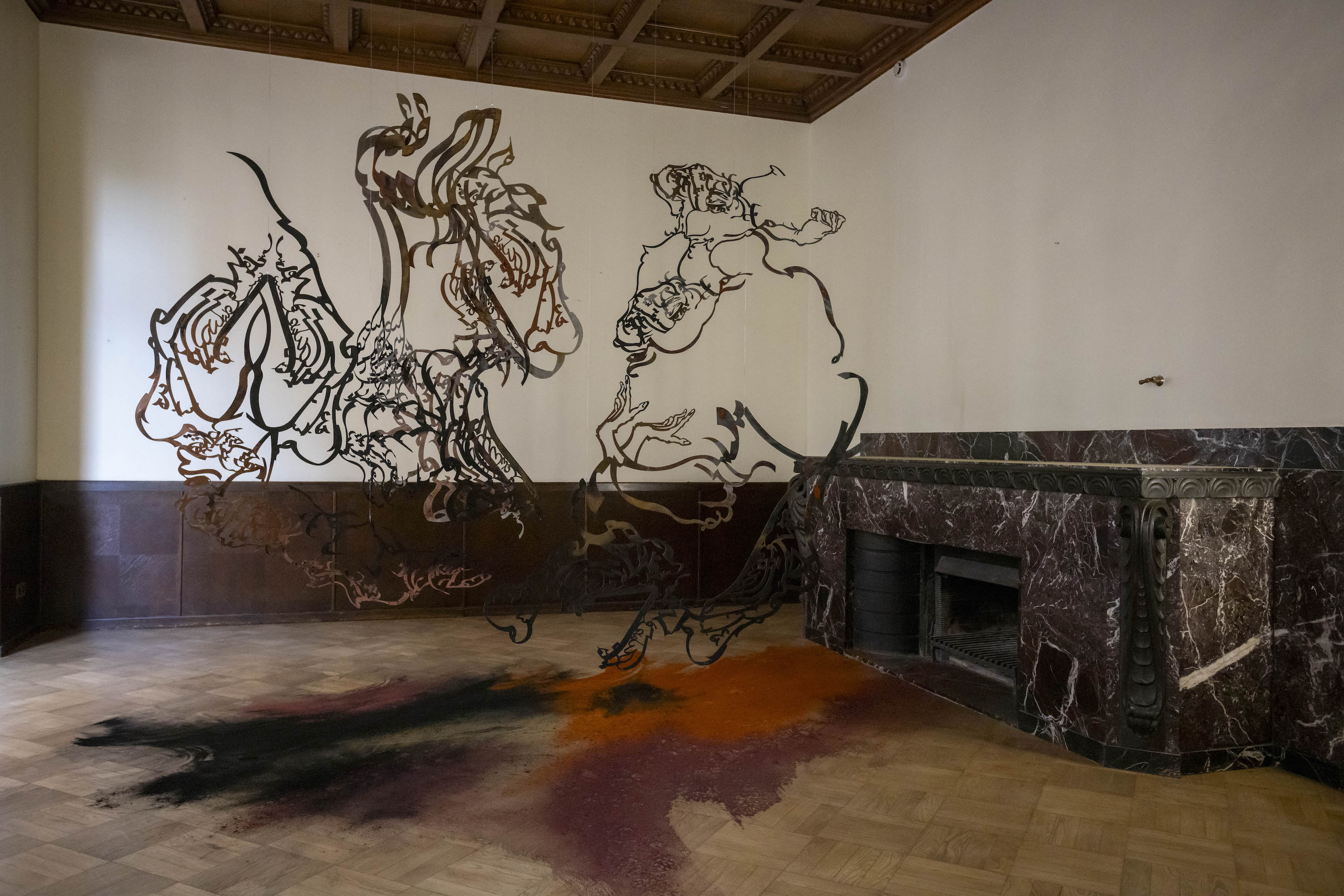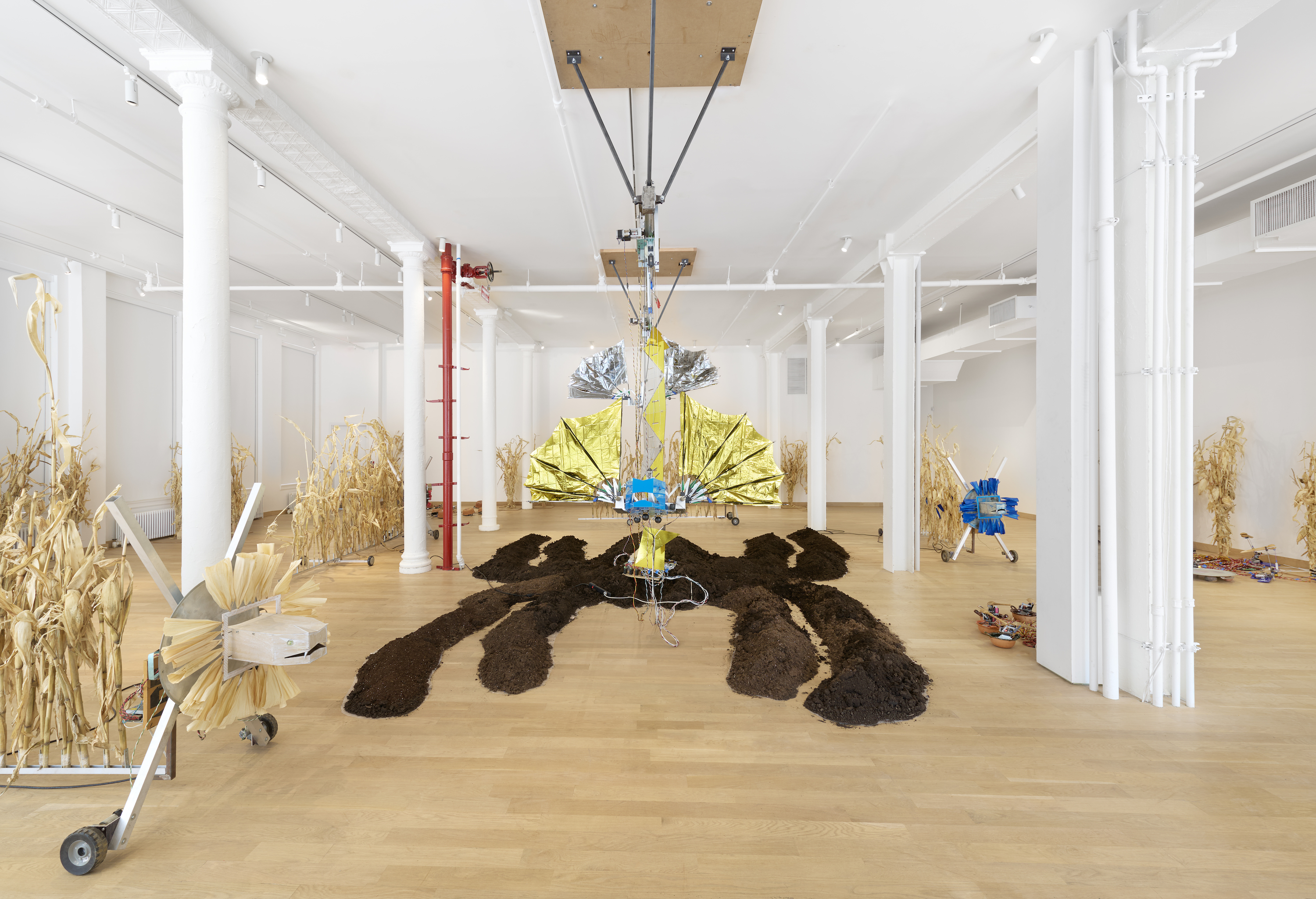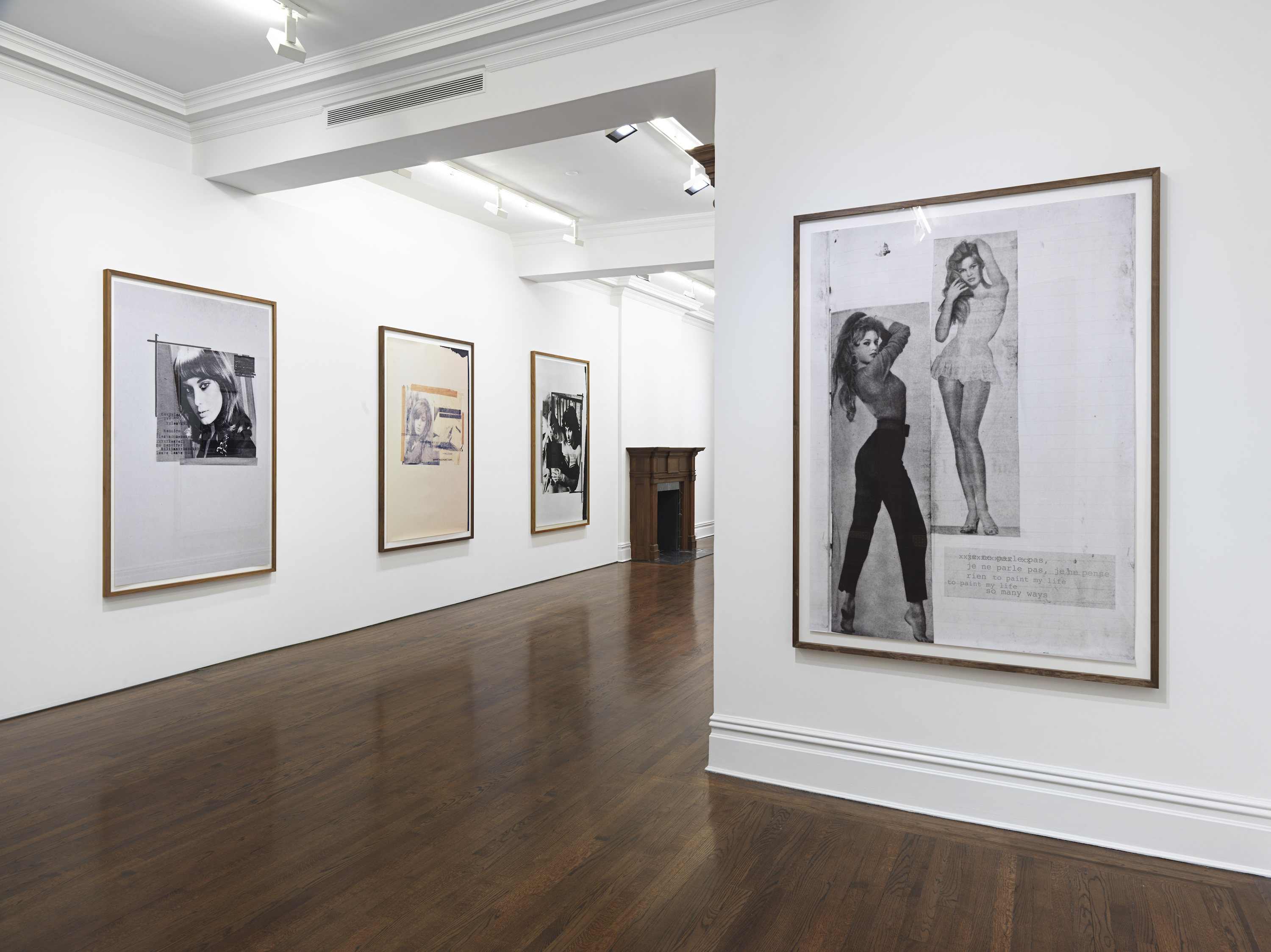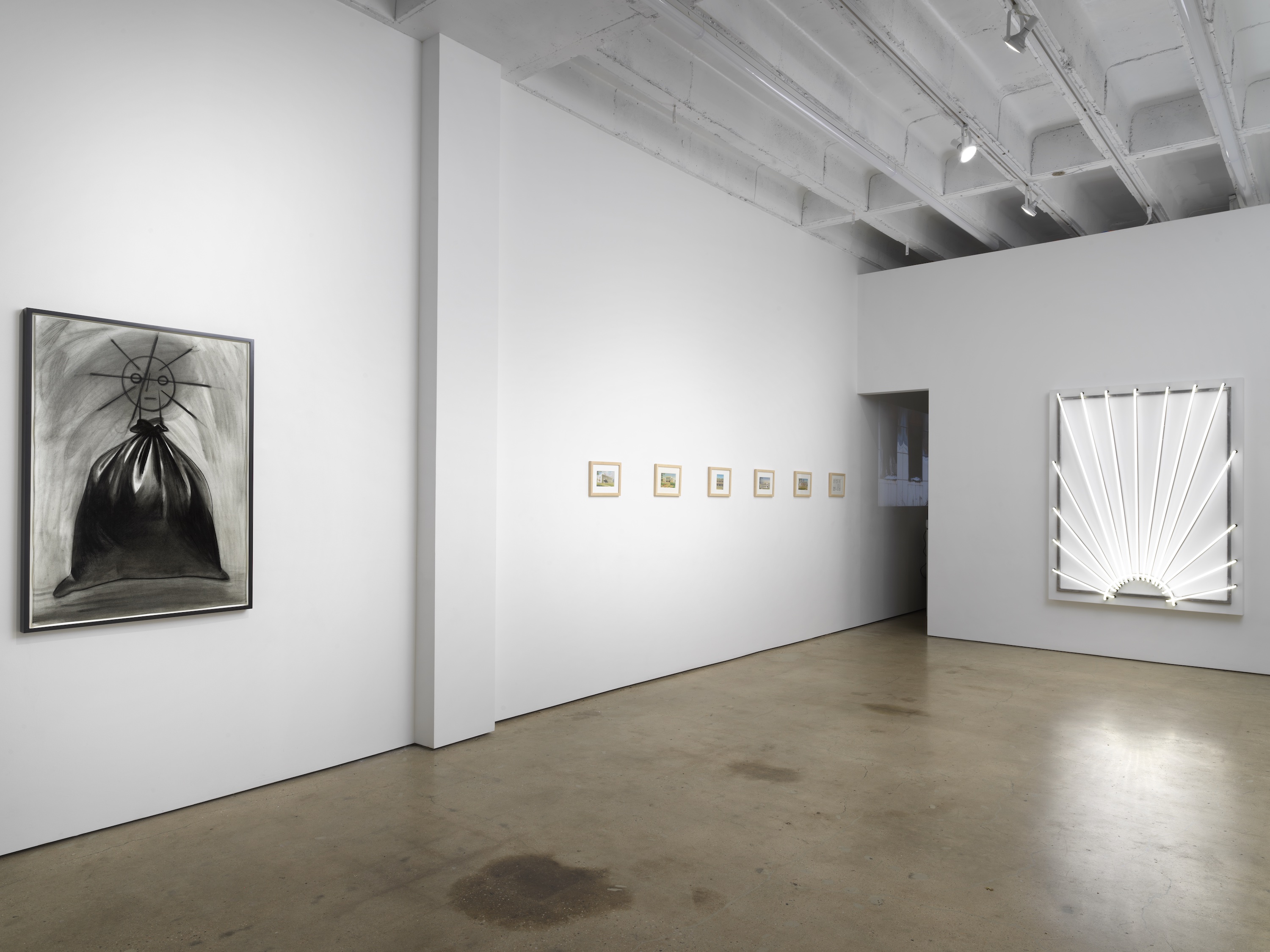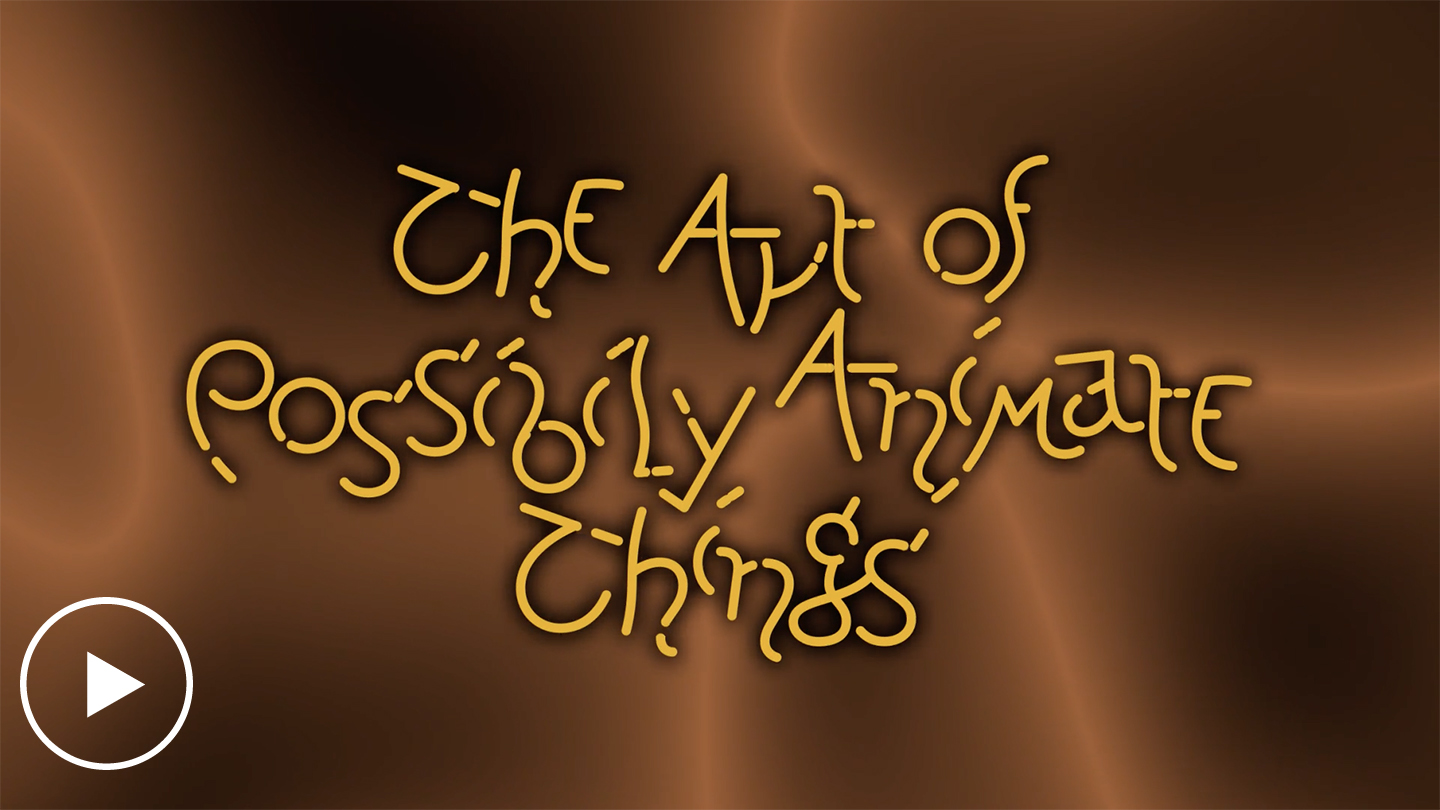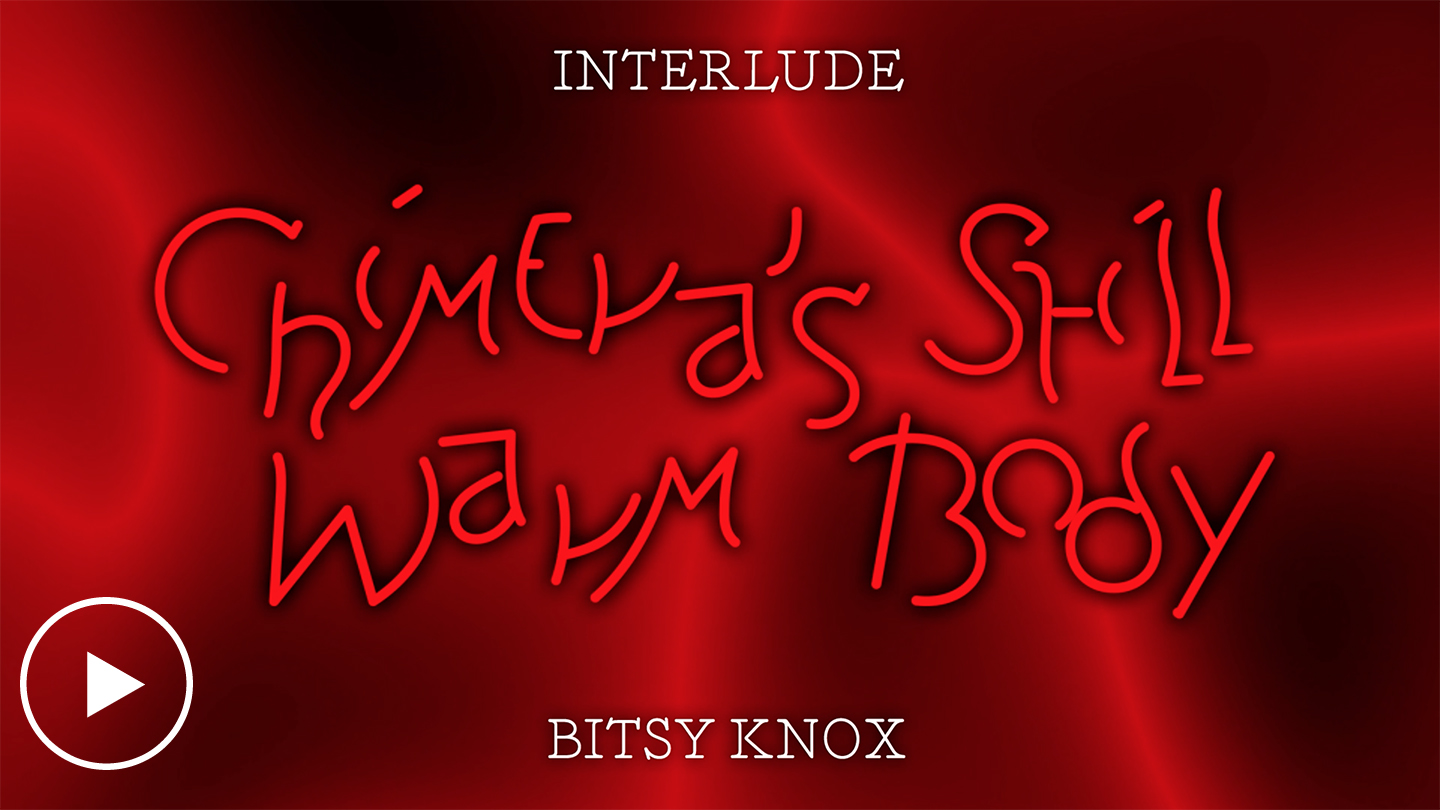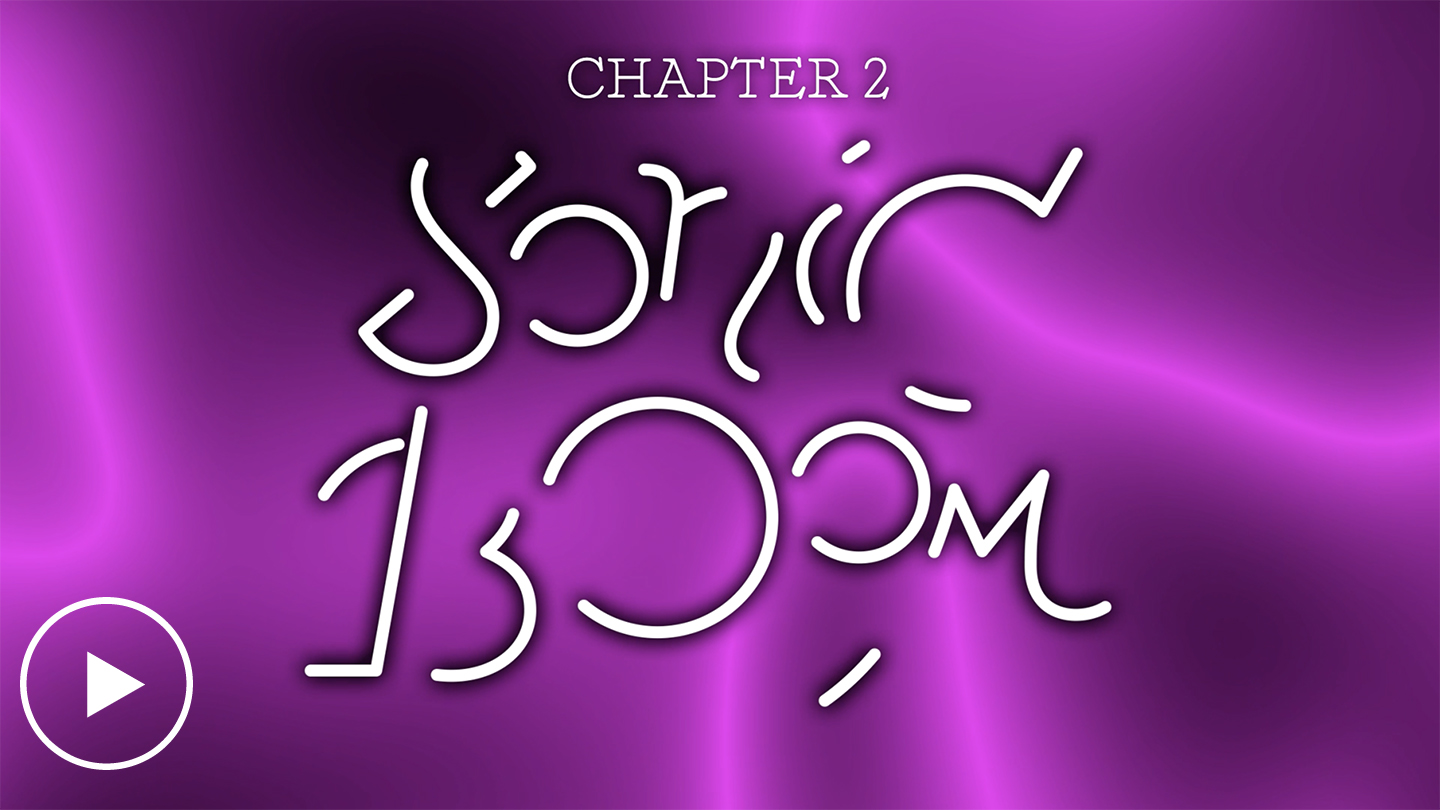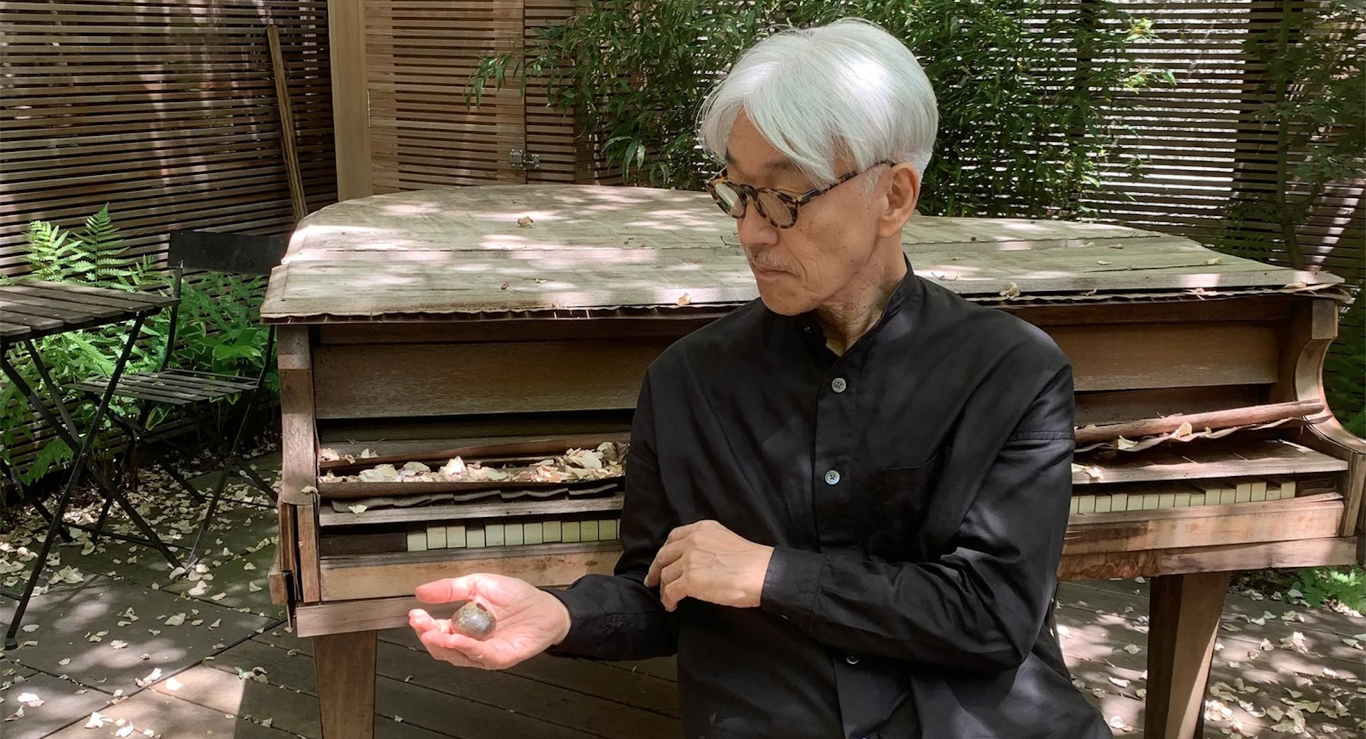
Photo by KAB America Inc. 2020.
There is, in reality, a virtual me.
This virtual me will not age, and will continue to play the piano for years, decades, centuries.
Will there be humans then?
Will the squids that will conquer the earth after humanity listen to me?
What will pianos be to them?
What about music?
Will there be empathy there?—Ryuichi Sakamoto, 2023
On a rainy afternoon in 2022 I met with Alec Fellman, a longtime friend and collaborator of Ryuichi Sakamoto, and the manager of his production company KAB.1 I wanted to discuss exhibiting a certain piano that was found at Fukushima in the aftermath of the 2011 Great East Japan Earthquake, the resulting tsunami, and the eventual triple-reactor nuclear meltdown. The piano was damaged but it emerged, bloated, from the water (“I felt as if I was playing the corpse of a piano that had drowned,” says Sakamoto in the documentary film Coda). Fellman was housesitting for him while the composer was in Japan undergoing treatment for cancer. He told me about a couple of other similar pianos located at Sakamoto’s West Village home, one of which remains in the garden and gets played occasionally despite being overrun by plants and critters. Pianos are fragile instrumental bodies that quickly go out of tune when exposed to the elements. I know, because I used to tune them. But Sakamoto didn’t see it this way. He said it was a question of matter “struggling to return to a natural state.”2 His recent experiences of teetering on the brink of death made him aware of the complexity of mortality.3 He said, “Living life is a gift, but also bittersweet, don’t you think so?”
I can’t begin to parse Sakamoto’s extensive and kaleidoscopic discography, which includes twelve solo records, multiple collaborations, award-winning soundtracks, silver-screen appearances, and groundbreaking accomplishments as one-third of the pioneering electronica trio Yellow Magic Orchestra, with Haruomi “Harry” Hosono and Yukihiro Takahashi. Many tributes skillfully do just that, and each of Sakamoto’s endeavors is completely, epically paradigm-changing. Sakamoto was acutely interested in the ways in which music transcends space, borders, and nationality. In 2003, in the aftermath of 9/11, he teamed up with long-time collaborator David Sylvian to produce World Citizen (2003), a melancholy single (where Sylvian sings, “Why can’t we be / Without beginning, without end?“). It is one of Sakamoto’s countless collaborations, including recordings with Brian Wilson (Beauty, 1989) and David Byrne (Sweet Revenge, 1994), and a twenty-year partnership with artist Carsten Nicolai, also known as Alva Noto, in a series of recordings that explored space and texture. Sakamoto often credited Nicolai with reintroducing him to the music of John Cage, which triggered a remarkably prolific creative period for the composer in the early 2000s. At an age when many artists succumb to commercial pressures and produce lackluster work, Sakamoto found a new framework for his creativity, which resulted in the performative, semi-improvisational album Glass (2018), a collaboration with Nicolai that was inspired by a rainy-day experienced in a glass house, turning the entire structure into an instrument, with a nod to shakkei principles.4 His ambitious, multiform, multimedia 1999 opera LIFE featured contributions from over a hundred performers, including Pina Bausch, Bernardo Bertolucci, Josep Carreras, the Dalai Lama, and Salman Rushdie. His eclectic tastes ranged wildly, combining and recombining disparate genres, from East Asian jazz, Western pop, and Javanese gamelan to Stockhausen and Debussy. It seems that with each project he effortlessly broke new ground, removing borders and challenging the idea of authenticity. In 1988 he said, “I don’t think I’m Japanese. To be a stranger—I like that attitude.”5 He called his approach to musical diversity “neo geo,” foregrounded by the eponymous 1987 record produced with Iggy Pop and Bootsy Collins.
In 2020, early into the Covid-19 pandemic, Sakamoto performed a sonic cure in his studio.6 A black-and-white video shows him picking up and putting down objects from the ground, and scraping a smooth rock against the jagged inside of a stone bowl, the microphone picking up a faint whistling sound as the bowl unevenly resonates. The composer wears large headphones. Completely focused on that sound, like a child listening to the ocean in a seashell, he starts drawing circles inside the bowl; smiling, his eyes close; he has finished but the seashell ocean continues its hum. A distant dove joins the chorus as an array of sounding bowls and a cymbal meet a violin bow. The rock, which is now revealed to be a sharp piece of obsidian, also encounters the cymbal, the composition building to a frantic pace. Graduating to a simple piano melody, he plays half tones in a high register. In the room, a windy, expectant reverb echoes gently in the background; guitar drones noisily electrify the sonic space, until all sounds converge in the humming of a synthesizer, now busy like an electric beehive, punctuated by sharp tones as the historic journey from Stone Age to Space Age is complete.
The performance was meant to reach the people of China, who had just begun their second month of isolation. The sonic spell was intended to put people at ease, reminding them of the vastness of human history and our individual part in it. Sakamoto didn’t know it yet, but the cancer he had just beat was building up again in his body.
The first film Sakamoto saw was La Strada by Fellini, with his mother, as a four-year-old boy. Unable to understand or recall the film’s contents, one thing stuck with him: the bombastic soundtrack by Nino Rota. Through melody, he was able to access that distant memory.
He often described the urge to compose a sound to go with everyday situations. Recalling a trip he had taken with his daughter when she was very young, in the corner of his eye a cloud slowly drifted away. What kind of music could accompany that moment? He concluded that the urge to compose in the present moment must be the feeling some people call inspiration. As a young boy, traveling to school in Tokyo, he remembered contorting his body to fit into the tight puzzle of commuters on the morning train.7 To escape, he would count the different types of noise the train produced, which fit together like an orchestra playing in that transient moment. Sakamoto said:
Music is tightly ruled by numbers. I cannot imagine music that is not backed by a numerical system … If we closely examine time, we will find it to be a kind of number. Time is the brain’s tag system for placing remembered events in a linear development. History and memory are another story, however, for they consist of images, words, sounds, sensations—everything (or part of everything) we feel every day. These things we do not remember on a time axis. The difference between time and history is large.8
In 2019 he also said: “Anything can be music. Even big cities like New York, or Tokyo, each city has a different sound. It’s full of sound. Right in the center of Paris, I heard the sound of water, so I recorded it. So beautiful.”9 More recently: “Music is like a city. It is exceedingly artificial, in other words. Nature in its immensity, a tsunami, for example, will instantly destroy it.” Often he compared music to a city, and life to a body of water. His fruitful collaboration with Shiro Takatani, the album LIFE – fluid, invisible, inaudible … (2007), is an abstracted reconstruction of his 1999 opera LIFE. In Elizabeth Lennard’s wonderful 1984 documentary film Tokyo Melody, a young Sakamoto details the many sounds of Tokyo as construction beams, cars, and neon signs flicker by to upbeat electronic music. In the middle of the film the young composer dusts off a postcard of the Arc de Triomphe near a pond in Tokyo. Sitting on a ledge, he reads in French. It is a quote by Claude Debussy, his favorite composer: “I’m working on things that will only be understood by the grandchildren of the twentieth century. They alone will see that the garb doesn’t make the musician. Stripping the veils from idols, they will discover a sorry skeleton.” Speaking to me on the phone, Lennard said the film was shot in seven days, which was quite difficult because the musician was approached by hordes of fans everywhere they went. The only location where they could shoot calmly was Tokyo’s “Suicide towers,” shots that appear in her film tinted blue, reminiscent of the dreamy scenes from Tarkovsky’s Stalker (1979). Even back then, she said, he was already quite preoccupied with the way that sound articulates movements, spaces, dynamics, and most importantly, time itself.
Postwar Japan was simultaneously embraced and shunned by Western media. The period between 1975 and 1989, when Sakamoto rose to fame, was marked by seismic cultural shifts in Japan that saw much ideological and temporal confusion and, in some ways, a collective identity crisis due to the many changes brought in by the West. By the time Lennard filmed her documentary, Sakamoto was already a mega-star in Japan, with several top-ten records and a breakthrough performance as a Hollywood actor alongside David Bowie in Nagisa Oshima’s Merry Christmas, Mr. Lawrence (1983). The award-winning soundtrack inspired a long career in scoring for the screen (including the multi-Oscar-winning Last Emperor in 1989) and a long-term collaboration with David Sylvian.10 Fascinated by the way that movies change and transform time, Sakamoto saw everything as composition, as having a musical dimension. He often spoke of working in sound as an exercise in “sculpting time.” About Tarkovsky, who coined that phrase, he would say, “I can learn musical composition by looking at his film.” He especially admired Tarkovsky’s use of water, wind, and footsteps.
In 2021, for the exhibition “Seeing Sound, Hearing Time” at Beijing’s M WOODS museum, the tsunami piano was connected to a machine that measured the seismic movements of the earth. The piano played the varying tonalities by interpreting the data for a piece called IS YOUR TIME. March 11, 2022 was the ten-year anniversary of the earthquake—a time when Putin’s fresh nuclear threats began to dominate the news. Soon after, Julieta Aranda and I talked about the nuclear threat. I’ll never forget the way she described it as a threat to change, the threat of stagnation and death: an evil that stands against the idea of time itself. Then we listened to “We Love You” (1991), a song she used to play at the end of her DJ sets.
In his exhibition essay for “Seeing Sound, Hearing Time,” Victor Wang suggests that “in the context that allows Sakamoto to listen to a cloud, we must also be open to listening to alternatives,” referring to a framework described as “non-history,” a term that leans on theorist Dipesh Chakrabarty’s proposal that all recorded history is European history.11 In her essay about the same exhibition, Sachiko Namba elaborates: “Western tradition conceptualizes time as moving in a linear progression along mathematically divisible points. Sakamoto was troubled by this western point of view on time.”12 Both curators emphasized the composer’s desire to go out of tune. In 2017 he put out async, his first record since recovering from throat cancer. He thought it would be his last album. async is a collection of field recordings, drones, and slow compositions interspersed with dreamy synths, chatter, and poignant experimentation. The album plays with a-synchronisms, chaos, and artificiality. Sakamoto said it was a soundtrack to a Tarkovsky film that was never made. On the track “Life, Life” (2017), Sylvian, whose voice also changed to fit the contours of his own continuing life, reads the poem “And this I dreamt, and this I dream” (1974) by Arseny Tarkovsky:
And this I dreamt, and this I dream
And some time this I will dream again
And all will be repeated, all be re-embodied
You will dream everything I have seen in dreamTo one side from ourselves, to one side from the world
Wave follows wave to break on the shore
On each wave is a star, a person, a bird
Dreams, reality, death—on wave after wave
No need for a date; I was, I am, and I will be
Life is a wonder of wonders, and to wonder
I dedicate myself, on my knees, like an orphan
Alone—among mirrors—fenced in by reflections
Cities and seas, iridescent, intensified
A mother in tears takes a child on her lap.
“Death is imposed only on created beings, not on works of art,” but some artworks come to resemble beings later in life.13 Sakamoto, who was a devout antinuclear activist, once said that “nuclear and human beings cannot coexist.”14 Growing up in mid-century Japan, he was strongly affected by the 2011 meltdown of Tokyo Electric Power Co.’s Fukushima No. 1 plant, which triggered painful national memories of Hiroshima and Nagasaki, exacerbated by the government’s failure to take moral responsibility for the event.15 After 2011 he started appearing in antinuclear ads and campaigns. He claimed that the Japanese government had failed to inform citizens of radioactive material carried to Tokyo and the Pacific coast by the wind. In most of the tracks on his final, twelfth record, 12 (2023), the wind in the seashell returns, this time accompanied by his own belabored breath.
Tarkovsky’s final scene in Stalker (1979) is eerily reminiscent of the dystopian landscape of post-tsunami Fukushima or post-meltdown Chernobyl. The quiet “zone” is a reflection of nuclear exclusion zones. Ominous winds animate the grasses in Tarkovsky’s Mirror (1974). Houses burn. His final film, The Sacrifice (1986), was Sakamoto’s favorite. In it, the protagonist learns of a looming nuclear catastrophe that will wipe out civilization unless he sacrifices everything of value in his life. Upon awakening, he discovers that it was a dream but decides to proceed with the sacrifice anyway. The skies turn grey. Water, sound, and time come together in a foggy sort of memory. Naturally, a secret melody is forming around it. It is the most inexplicable thing I can imagine.
The title of this text is taken from a song by Ryuichi Sakamoto →.
Ben Kenigsberg, “Review: ‘Ryuichi Sakamoto: Coda’ Shows a Composer Attuned to Nature,” New York Times, July 5, 2018 →.
Hillary Weston, “Sonic Memories: A Conversation with Ryuichi Sakamoto,” criterion.com, June 1, 2017 →.
From the Wikipedia entry on shakkei (“borrowed scenery”) design: “Borrowed scenery … is the principle of ‘incorporating background landscape into the composition of a garden’ found in traditional East Asian garden design. The term borrowing of scenery (“shakkei”) is Chinese in origin, and appears in the 17th century garden treatise Yuanye” →.
Simon Reynolds, “Ryuichi Sakamoto’s Borderless Brilliance,” Pitchfork, April 2, 2023 →.
See →.
“Ryuichi Sakamoto” (biography), sitesakamoto.com →.
Ryuichi Sakamoto and Shiro Takatani, “Is Your Time,” You Can’t Trust Music →.
See →.
See, for example, David Sylvian and Ryuichi Sakamoto, “Forbidden Colours,” A Victim Of Stars 1982–2012, Virgin, 1987 →.
Victor Wang, “The World is a Sound Garden: Notes on Ryuichi Sakamoto and A Non-History of East Asian Modern Noise,” in Ryuichi Sakamoto: Seeing Sound, Hearing Time (M WOODS, Beijing and Kab Inc./Kab America Inc.), exhibition catalog.
Sachiko Namba, “Seeing Sound, Hearing Time: Installing the Music of Ryuichi Sakamoto,” in Ryuichi Sakamoto: Seeing Sound, Hearing Time.
Theodor Adorno, “Late Style in Beethoven” (1937), in Essays on Music (University of California Press, 2002), 566.
“Fukushima Disaster Pushed Sakamoto’s Anti-nuke Drive,” Asahi Shimbun, April 4, 2023 →.
“‘Criminal’ to Keep Creating Nuclear Waste, Ryuichi Sakamoto Says,” Asahi Shimbun, March 11, 2021 →.
